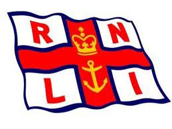- Home
- Scarrows
- Mariners
- Cumberland
- Miscellaneous
Joseph Scarrow, First Voyage in Command
This was Joseph's second trip as Mate on Blucher, under the command of Captain William Brown. William Thomas was 2nd Mate, and they had the luxury of both a cook and a steward. Completing the crew were six seamen and two apprentices, making a total on board of thirteen men.
The trip originated out of Greenock on 21st October 1839, making a stop in Liverpool to pick up some crew members, and also a stop in Troon. After leaving Troon on 3rd November, they put into Belfast three days later on the 6th. Eventually they set sail for St. Thomas, arriving in early January 1840.
 Whilst in St. Thomas, several of the crew contracted Yellow Fever, and this took the life of Seaman William Ross (died 8th Jan 1840); Second Mate William Thomas (died 27th Jan 1840); and apprentice Ephraim Banks (died 5th Feb 1840); The steward, Frederick Aighton and seaman Thomas Hall were both discharged in St. Thomas. Six new crew members were hired, including another steward. One of the new crew, Seaman William McAvoy, died on 1st Feb 1840 before the vessel had even set sail again.
Whilst in St. Thomas, several of the crew contracted Yellow Fever, and this took the life of Seaman William Ross (died 8th Jan 1840); Second Mate William Thomas (died 27th Jan 1840); and apprentice Ephraim Banks (died 5th Feb 1840); The steward, Frederick Aighton and seaman Thomas Hall were both discharged in St. Thomas. Six new crew members were hired, including another steward. One of the new crew, Seaman William McAvoy, died on 1st Feb 1840 before the vessel had even set sail again.
 Having lost four crew members to Yellow Fever, the vessel sailed to Gonaives, Santo Domingo. During the voyage, on February 18th, another seaman John Johnson, also died. He had only just joined the vessel in St. Thomas. Whilst in Gonaives, on 25th Feb 1840, Captain William Brown also succumbed to Yellow Fever. He was just 26 years of age. This brought the total number of deaths to six.
Having lost four crew members to Yellow Fever, the vessel sailed to Gonaives, Santo Domingo. During the voyage, on February 18th, another seaman John Johnson, also died. He had only just joined the vessel in St. Thomas. Whilst in Gonaives, on 25th Feb 1840, Captain William Brown also succumbed to Yellow Fever. He was just 26 years of age. This brought the total number of deaths to six.
| Yellow fever is an acute viral hemorrhagic disease. The yellow fever virus is transmitted by the bite of female mosquitoes and is found in tropical and subtropical areas in South America and Africa. The origin of the disease is most likely to be Africa, from where it was introduced to South America through the slave trade in the 16th century. In the 19th century, yellow fever was deemed one of the most dangerous infectious diseases. Yellow fever presents in most cases in humans with fever, chills, anorexia, nausea, muscle pain (with prominent backache) and headache, which generally subsides after several days. In some patients, a toxic phase follows, in which liver damage with jaundice (inspiring the name of the disease) can occur and lead to death. |
On the 1st April, with the vessel still in Gonaives, Raimond Admiral, the cook, and one of the original crew, deserted. Given what had happened on this trip, one can sympathise with his actions.
| The Blucher (late Brown), of Workington, would be ready for sea at Gonaives, about the middle of April. |
| The Blucher, Scarrow, of Workington, would sail from Gonaives for Cork, for orders, on the 22nd April. |
| The Blucher, Scarrow, of Workington, from St. Domingo at Liverpool, on the 23rd ult. (23rd Jul) —38 days passage. |
Blucher, with Joseph now in command, departed Gonaives on April 22nd, and sailed to Turks Island, where four more seamen were recruited . The vessel finally left Turks Island on June 15th, and Joseph sailed Blucher back to Britain, arriving in Liverpool on the 23rd July after a 38 day passage. Of the original crew of thirteen, only four had returned to Liverpool on Blucher.
A copy of the Crew List for this voyage can be seen here. (It will open in a new tab). It shows a full list of the crew, and for each seaman shows his age, place of birth, rank, previous ship, date and place of joining the vessel, and finally date, place and manner of leaving the vessel.
Joseph remained command of Blucher for the next seven years before purchasing his own vessel, Albion, in 1847.
The final section on Joseph Scarrow deals with his will and can be seen here.








